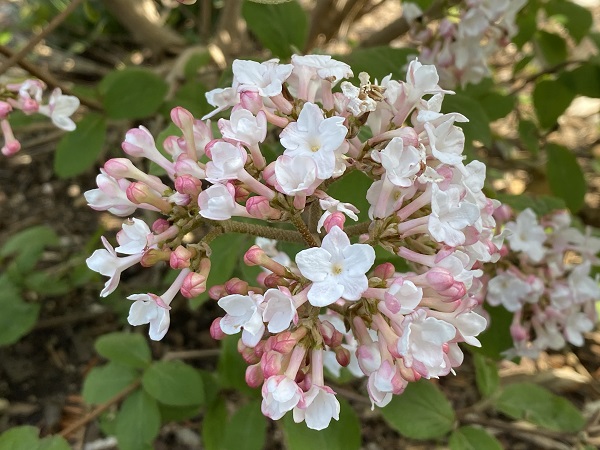Spring flowering bulbs and perennials are filling our landscapes with color. As your gardens come alive this spring, start making notes on needed improvements and provide some early season color and nectar for the pollinators. This will keep your landscape looking its best all season long and for years to come.

Start a garden journal or photographic record of your garden. Make notes or take pictures of what is working in your landscape, plants that need to be removed or areas where more color or new plants are needed. These notes will help as you create a landscape filled with year-round beauty.
Make sure your plants receive sufficient moisture. It is easy to overlook watering during the cool and often wet spring months. A rain gauge can help you monitor the rainfall in your yard. Plants benefit from thorough watering that encourages deep, drought and pest resistant roots. Check the soil moisture and water when the top four to six inches are crumbly and starting to dry. Established drought tolerant plants tolerate drier soil.
Start pulling weeds as they appear. Removing them when they are small makes removal easier and prevents them from flowering and producing seeds. That means fewer weeds to pull next year.
Disease and pest-free leaves, evergreen needles and other organic mulch covering the soil surface help suppress weeds, conserve moisture, and improve the soil as they break down. Leaves also provide homes for many insects, frogs, and toads. You’ll achieve lots of benefits from this one task.
Leave perennials stand until daytime temperatures are consistently 50 degrees. This allows overwintering eggs to hatch and insects to exit their winter homes. If waiting is not an option, cut most stems back to the ground and stack them out of the way. This allows the insects to exit their winter homes when the time is right. Leave some stems standing 8 to 12” above ground so insects can form new homes. Chop up the removed plant material in mid-summer or fall to use as mulch in the garden or the compost pile.
Watch for animal damage and protect your plantings as needed. Fresh new growth in the spring garden makes a tasty treat for rabbits, deer, and other wildlife.
Many gardeners enlist the help of repellents to protect their landscape plants. Treat pathways used to access your landscape as well as key plants before the animals begin feeding. It is easier to keep them away before they find all the delicious plants growing in your garden.
Continue taking pictures of your landscape throughout the year. Make note of any challenges encountered and needed adjustments in care. Include any failures; all gardeners have them. These are just another step toward growing a healthier and more beautiful garden.
Then take time to enjoy the beauty of your landscape. Find a comfortable spot to sit, relax, listen to the birds, and take in all the wonders spring has to offer.
Melinda Myers has written more than 20 gardening books, including Small Space Gardening. She hosts the “How to Grow Anything” DVD series and the Melinda’s Garden Moment TV & radio segments. Her website is MelindaMyers.com.
Related Articles & Free Email Newsletter Sign Up
Plant Profile – Crimson Pygmy Barberry is a Great, Low Maintenance Landscape Plant




Comment here